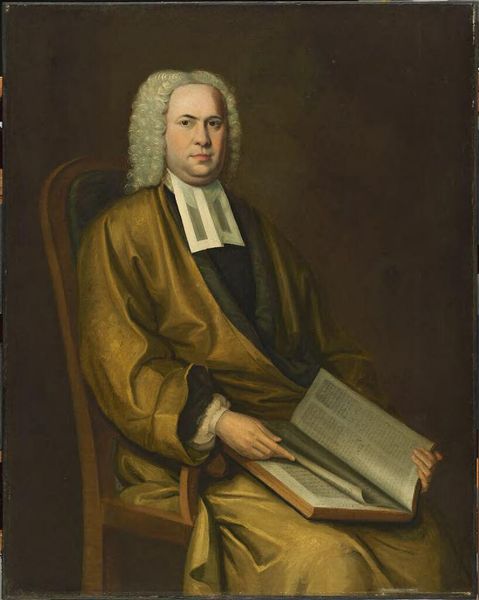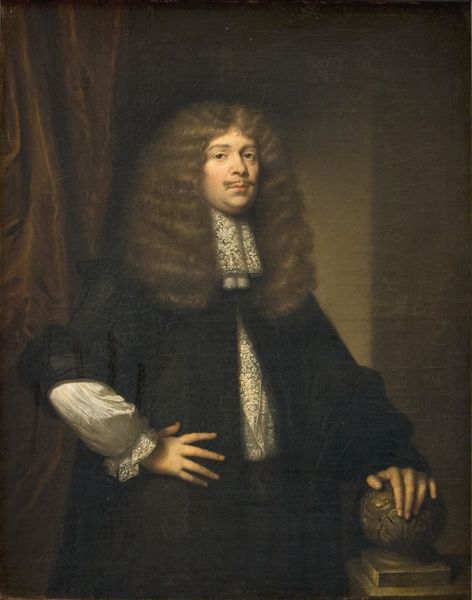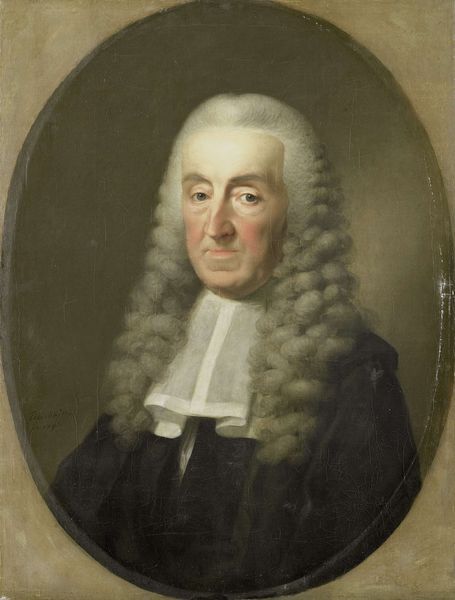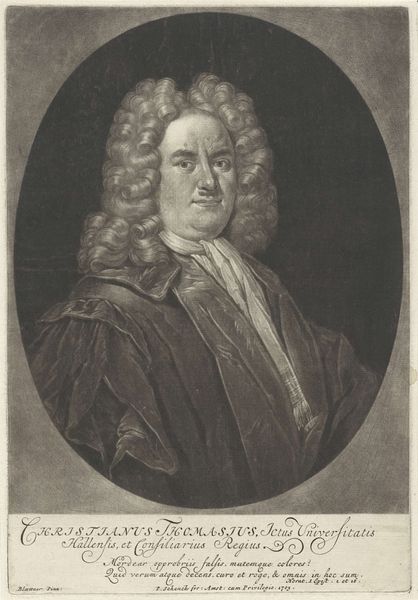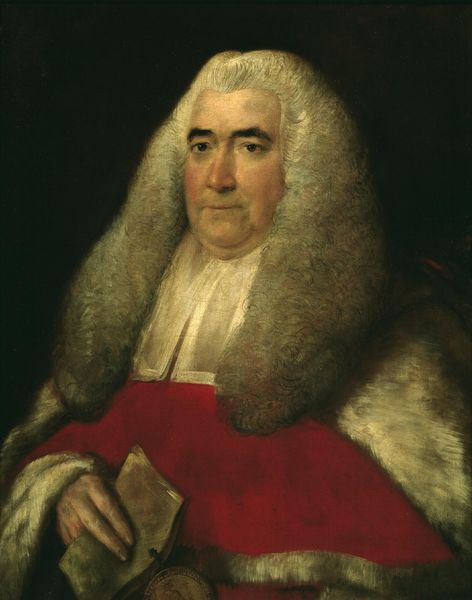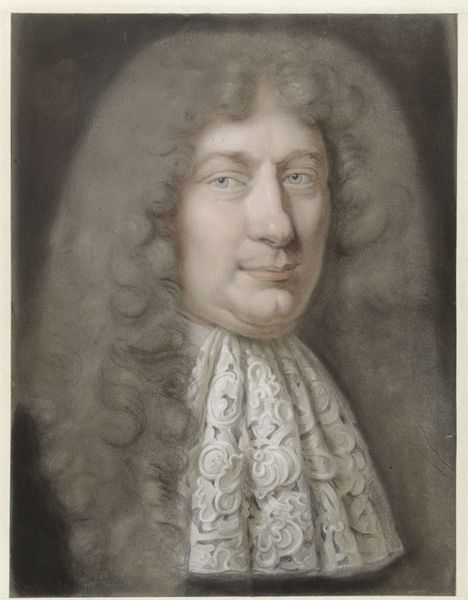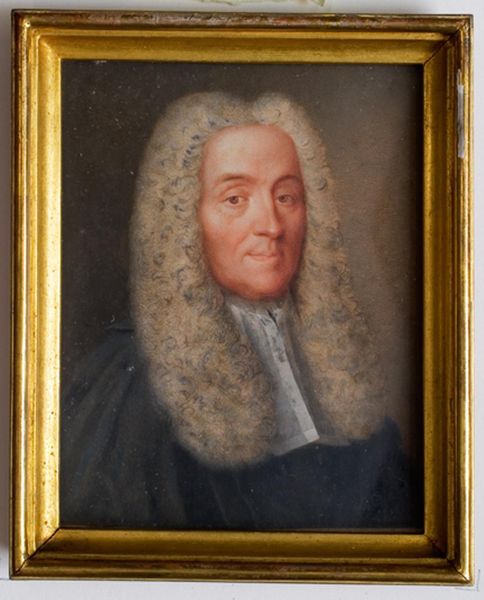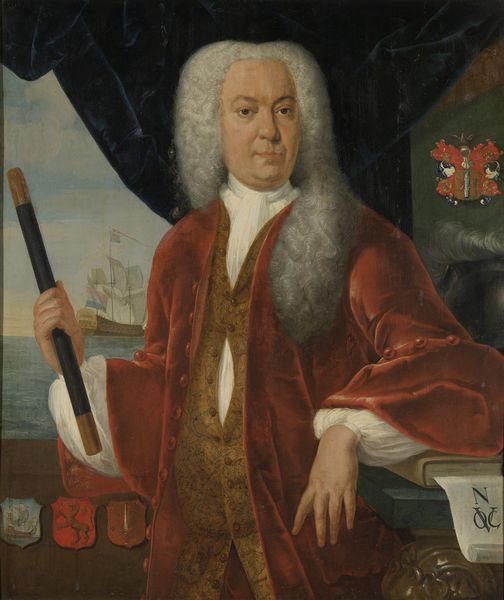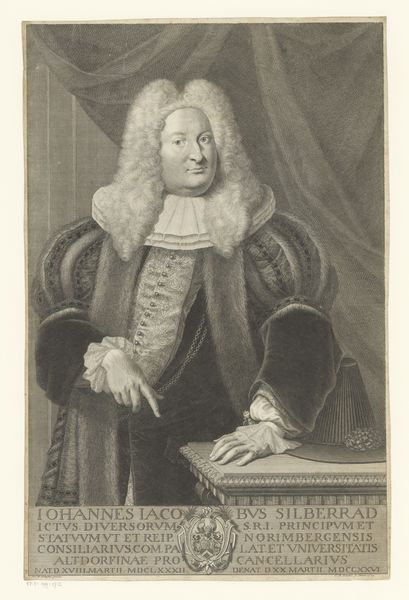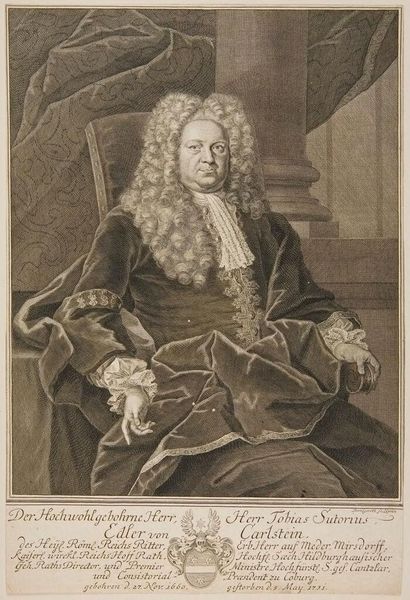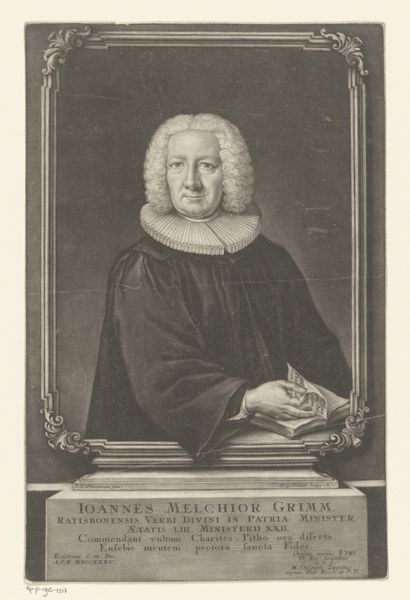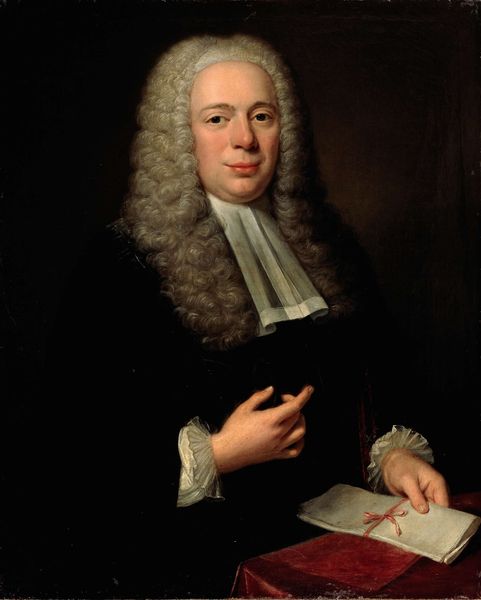
Portrait of Harmen Hendrik van de Poll, Burgomaster of Amsterdam 1749
0:00
0:00
hendrikpothoven
Rijksmuseum
painting, oil-paint
#
portrait
#
baroque
#
portrait
#
painting
#
oil-paint
#
genre-painting
#
history-painting
#
self portrait
Dimensions: height 50 cm, width 39.5 cm
Copyright: Rijks Museum: Open Domain
Curator: Before us hangs Hendrik Pothoven’s portrait of Harmen Hendrik van de Poll, Burgomaster of Amsterdam, painted in 1749. It’s a striking example of Baroque portraiture, here on display at the Rijksmuseum. Editor: Yes, it certainly has that characteristic seriousness. The almost somber use of light seems meant to convey gravitas. The textures and details within the darker tonalities are beautiful. Curator: Van de Poll embodies authority here, doesn't he? Look at the symbolism embedded in his attire. The dark robe signifies his civic role, while the meticulously rendered lace alludes to his status and wealth. Note, too, the quill and paper on the table. Writing, power, knowledge are linked, demonstrating how symbols transmit cultural memory across centuries. Editor: You're right, those details speak volumes. The composition, though, seems deliberately designed to frame the face as the focal point. See how the dark fabric contrasts with the wig, leading the eye directly to his expression. Curator: Precisely. Pothoven utilizes these traditional markers to convey very particular characteristics. Consider the slight arch of the brow and the slight upturn to the corner of his mouth. Pothoven hints at perhaps both a shrewd intellect, or possibly even at self-satisfaction. The cultural values embedded within these images—status, power, intelligence—persist, shaped by historical circumstances. Editor: Absolutely, and Pothoven makes effective use of color to draw out particular areas within the canvas. The painter's touch reveals subtle undertones in the rendering of skin. Note, also, how the whites draw our gaze to the central points. Curator: Such paintings serve as potent reminders of a past where symbols cemented a society's perception of power, wouldn't you agree? The visual codes speak volumes, even today. Editor: Indeed. The lasting impact comes from understanding that these painted portraits offer tangible connections to how power once presented itself, now viewed from the distance of three centuries.
Comments
No comments
Be the first to comment and join the conversation on the ultimate creative platform.
